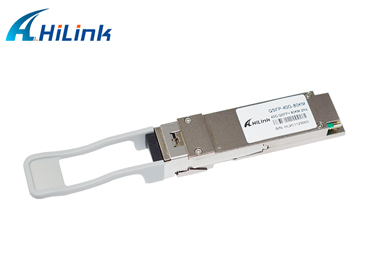Why Is My SFP Transceiver Not Working?
Mar. 10, 2023
SFP transceivers always fail to work due to non-standard operation. When this happens, it may be a good idea to find out why the SFP module is not working properly. This guide will help provide a variety of solutions for those new to the transceiver field.
Main causes of SFP module failure
The optical link does not work properly due to contamination and damage to the optical interface. The end surfaces of fiber optic connectors and optical slots are exposed to the environment and contaminated with dust. Using scratched or poor-quality fiber connectors can cause SFP failures.
Electrostatic Damage
ESD stands for electrostatic discharge. ESD attracts dust and changes the impedance between lines, affecting the function and life of the product.
Hilink 40G QSFP+ ZR4 Optical Transceiver
Compatibility Issues
Most manufacturers guarantee 100% compatibility, but this may not be the case. Once a module is found to be incompatible, it must be troubleshot with no apparent results.
How do I use SFP modules properly?
Optical modules must be operated in a standardized manner. Any irregularities in operation can lead to hidden damage or even permanent failure.
Personal Protection
Hold the optical module gently to prevent dropping it.
When installing the optical module, push it gently by hand. When removing the optical module, unlock it first. Do not use any metal tools during installation and removal.
Use special cotton swabs to clean the optical holes and do not insert any metal objects into them.
Anti-static
When transporting optical modules, please ensure that they are packed in anti-static packaging and do not remove them or leave them unattended unless necessary.
Wear an anti-static wrist strap or anti-static gloves before touching the optical module. Please take full ESD measures when installing.
Make sure the device is properly grounded before testing or using it.
Disconnect power when inserting or removing non-hot-swappable optical modules.
Avoid mixed use
Multimode modules use multimode fiber and singlemode modules use singlemode fiber, and mixing them can cause failures such as signal loss.
All SFP modules should be used in pairs. However, for simplex/BiDi SFPs, we should use two SFPs with opposite wavelengths for the transmitter and receiver.
Normal SFPs and CWDM/DWDM SFPs should not be mixed.
For long distance SFP, since its average output optical power is generally higher than the maximum input optical power, we should pay attention to the length of the fiber when installing it. If the condition is not met, a 10-20db optical attenuator must be used.
The SFP module is powered by 3.3 V. Elevated voltage can burn out the module.
Error codes and video failures can occur when lower-rate SFP modules are used for higher rate SFPs. The higher rate SFP modules are used at lower rates and transmission distance will be limited.
Make sure compatibility matches well. All transceivers actually have a built-in chip that contains information such as serial numbers, security information, and vendor IDs. If the information does not match exactly with what is in the database, these devices will undoubtedly be hindered, stopping these devices from working.
How can I tell if the SFP module is working?
Test whether the optical power is within the required range. If there is no light or the optical power is low, check the wavelength and the unit of measurement (dBm). Clean and check the fiber connector end face and optical module optical port, whether the fiber connector end face is blackened, scratched or bent, replace the fiber connector or optical module for interchangeability test.
Optical power is normal, but the link does not open. Check the link light. This problem is related to cabling. Using bad or wrong cables, wrong cable routing, or cables with loops can cause this type of problem.
After inserting the SFP, the slot is in the error disabled state (software corruption), remove the SFP transceiver from the slot and replace it with an authorized module. If it does not recognize the SFP module, make sure your module is not plugged in backwards, check the module slot, or replace it with an authorized module for interchangeability testing.












